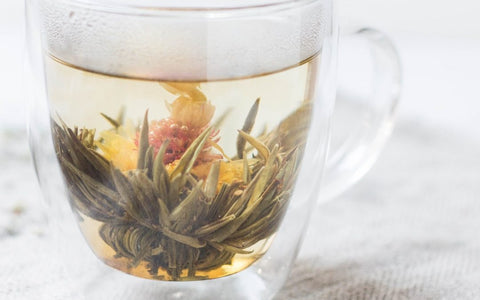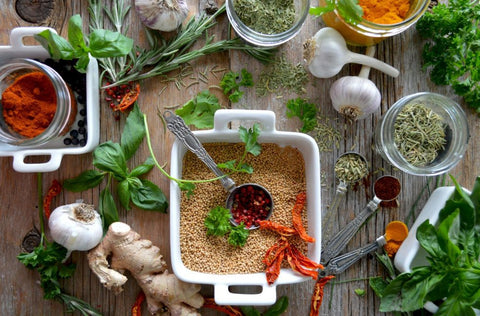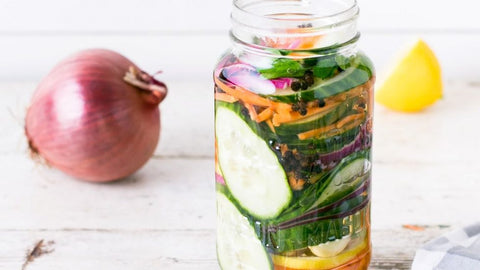Assuming your herb gardening is going as planned this year, you might soon be overwhelmed with an abundance of fresh herbs. While we love incorporating fresh herbs into every meal, it can become overwhelming. That’s why we’re exploring creative ways to use your fresh-grown herbs beyond just eating them.
One fantastic way to use your herbs is in teas, or more accurately, 'tisane', as we learned from chatting with Morgan Siegel, founder of Jeddah’s Tea. With Morgan's expert input, we’ll share tips and tricks to turn your herbal bounty into delicious tisanes that will delight your taste buds and heal your body.

About Jeddah’s Tea: Jeddah’s Tea aims to foster community and broaden worldviews by highlighting underrepresented cultures in the tea world. They believe in drinking to equity, understanding, and appreciation.
What Is The Difference Between Tea And Tisane?
Morgan explains that “Tea” refers to leaves from the Camellia Sinensis plant, which includes green, black, yellow, oolong, pu’erh, and white teas. Herbal concoctions, however, are known as “tisanes”. By infusing fresh or dried herbs in hot or cold water, you can enjoy a flavorful and beneficial beverage. Always research the benefits and risks of each herb to ensure safe consumption.
How Do You Make Herbal Tea / Tisane?
For most herbs, use around 3g of herbs per 8fl oz (240ml) of water. For a hot brew, use water between 190°F and 205°F and brew for 3-5 minutes. If it gets hotter or if the brew time is extended, it may turn bitter. For a cold brew, use the same ratio in room temperature water and let it infuse for 4-12 hours.

Which Herbs Can Be Used for Tisane / Herbal Teas?
Common garden herbs like mint, chamomile, lemon verbena, lavender, and rose make excellent tisanes. Others, such as lemon balm, lemongrass, catnip, rosemary, and thyme, are also great choices. Fresh herbs generally provide more flavor and release more essential oils, but dried herbs work too.

According to Morgan, more people are focusing on relaxation, self-care, and balance. Tisanes complement these rituals perfectly. Some favorites include Egyptian Chamomile and Lavender Rooibos. Egyptian Chamomile, used since the days of the Pharaohs, aids in relaxation and brews a light, floral tea. Rooibos, harvested by the Khoisan people of South Africa, regulates blood sugar, is high in antioxidants, and has antibacterial properties. It brews to a reddish-brown hue and pairs beautifully with lavender, which further aids in relaxation. Morgan recommends organic, fair-trade, and pesticide-free options for maximum enjoyment and relaxation.
Ready to Make Your Own Fresh Tisane?
The most important part of a good tisane is the herbs. While Urban Leaf doesn’t offer everything from the list above, you will find many seed varieties and more individually. You don’t need special equipment to make tisane – a coffee cup or mason jar works just fine. However, if you want to go all out, here are a few neat sets we found online.











There are no comments for this article. Be the first one to leave a message!